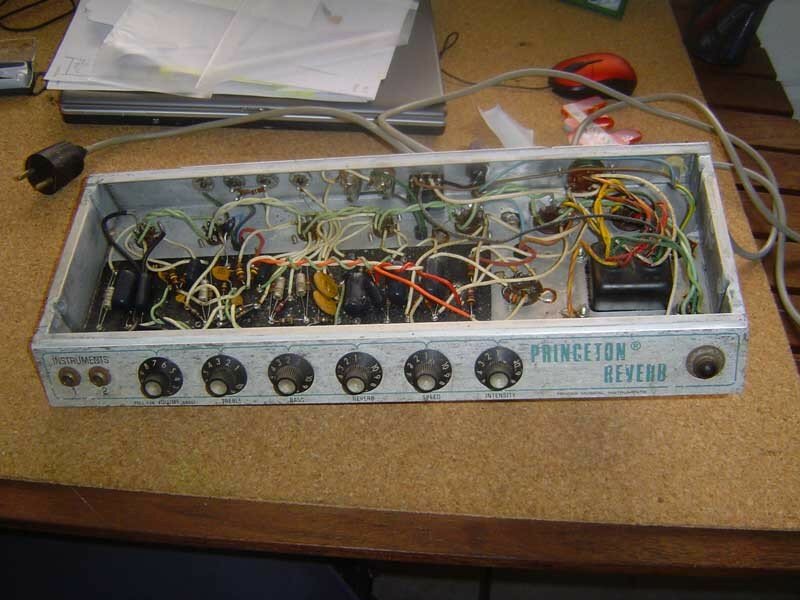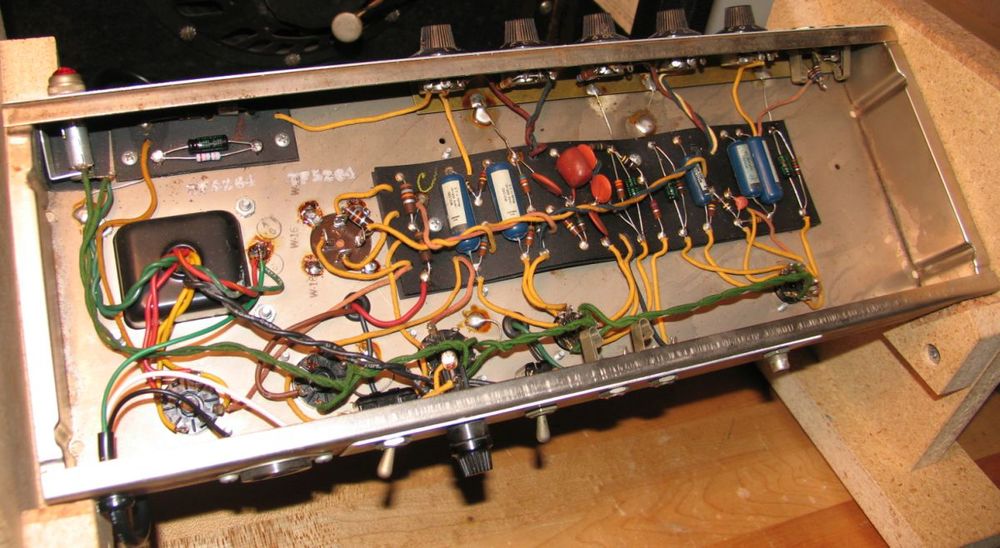You are using an out of date browser. It may not display this or other websites correctly.
You should upgrade or use an alternative browser.
You should upgrade or use an alternative browser.
Princeton Reverb Distortion issue.
- Thread starter Anthon
- Start date
Help Support GroupDIY Audio Forum:
This site may earn a commission from merchant affiliate
links, including eBay, Amazon, and others.
Anthon said:Apparently I was mistaken - my tweed Princeton does it also, so never mind that. :
Still, it sound very similar to what I'm hearing in the volume pot and the distortion crackling.
On the other hand the volume pot casing on my tweed Princeton doesn't make any noise when I probe it, only in the area near the preamp tube - on the Priceton Rev it makes a lot of noise .... so perhaps this is not normal after all.
It just sounds exactly what I hear when I turn the knob (small click, same when you momentarily poke the casing) or when the amp distorts (if I rub the pot casing with the probe, it makes the same crackling noises).
I tried replacing the pot with a different CTS, and an Alpha pot - but the casing still makes noises.
I have a hunch that this relates to the problem I'm hearing. ???
MagnetoSound
Well-known member
Definitely sounds like a poor grounding scheme.
Can you find internal photos of original Princetons to copy?
Can you find internal photos of original Princetons to copy?
MagnetoSound said:Definitely sounds like a poor grounding scheme.
Can you find internal photos of original Princetons to copy?
I guess the main difference would be the original had a brass plate - it must be there for a reason. I'm not sure what it supposed to do...
But most clones I've seen don't have it, also my Tweed builds works perfectly without it.
However I've noticed they connect all the casings to a bus and run it to the ground. Would it change anything? The casings should already be grounded, because they are connected to the chassis.

MagnetoSound
Well-known member
Anthon said:However I've noticed they connect all the casings to a bus and run it to the ground. Would it change anything? The casings should already be grounded, because they are connected to the chassis.

If you remember, I asked in an earlier post whether you had connected the volume pot ground to the same point as the cathode resistor and bypass cap. If you look at the photo here you will see that this is indeed the way to do it.
If you consider the currents flowing in the following stage you might see why this is a good idea. The resistance of the volume pot provides the ground path for the grid, which ideally should be physically close to the ground of the cathode. I cannot say if this will fix your clicking problem, or the distortion, but for clean tone and minimal hum I would begin by following this pattern.
Similar threads
- Replies
- 10
- Views
- 597
- Replies
- 10
- Views
- 900
Latest posts
-
For Sale 3d nite EQ in 500 Format - PCBs + Potentiometers (20 pieces available)
- Latest: MasterTheSound
-
-
-
-
-



